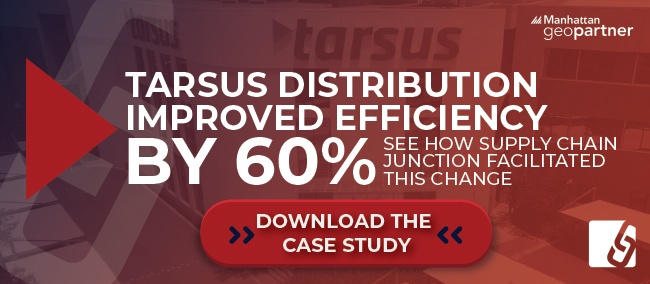Changes to the Saudi Arabian Workforce, And How To Manage Them


The GCC warehousing economy is confidently booming, as 2020 makes industries shift to local supply chains. But governmental changes to labour laws have shifted the workforce, leading to new challenges and new solutions. We continue our focus on Saudi Arabia and look at the new demands for staff success in your supply chains.
The Saudi government is under tremendous pressure to employ significantly more Saudis: expatriates have historically accounted for a large proportion of the workforce (10 million compared to a total Saudi population of 31 million), with seventy percent of these expatriates being low-skilled laborers, typical of what we would find in warehousing.
In order to comply with this and still do so to the benefit of your business, you need to understand what that changes are to your potential workforce and how to support your new labour base when it comes to technological proficiency, adoption of tools, and understanding of processes both on your warehouse floor and throughout your supply chain.
Governmental Solutions for National Recruitment
How The Saudi Workforce is Changing
In order to encourage promotional opportunities and growth in Saudization—the official national policy of replacement of foreign workers with Saudi nationals in the private sector—the Saudi labour law has been promoting several concepts that employers must be familiar with if they wish to take advantage of a booming logistics market:
- The expected retirement age at 60, with employment beyond 59 is a mutually agreed upon decision between employers and employees.
- Nitaqat is a tiered quota system which rewards a Saudi-based workforce
- A work visa system that impedes the employment of non-Saudis
- The Human Resource Development Fund (HRDF) is a generous incentive program for employers to train Saudis for work. Effectively, the HRDF plays the middleman and project manager for vocational training for employers.
Employers are encouraged to enroll Saudis in various vocational training programs reimbursed by the HRDF. Saudis enrolled receive a salary while they are in training and the HRDF reimburses the employer up to 50 percent. Saudis in these programs count toward Saudization quotas, but it is a lavish program that requires extensive employer recordkeeping. A comprehensive software system will assist this monumental task.
There are key efforts that businesses can put into play to assist this transition to a younger, ambitious, indigenous workforce. We look at three options to harness this potential and make the change a positive one.
Turn your warehouse workforce into a force to be reckoned with
1. Training
Even the best system needs educated support to gain the most out of it.
- Identify key people within your workforce for training with software systems partners, enabling them to pass this education and training on to the next group below them. This ensures thorough knowledge and skills permeation, as well as a clear structure of understanding and command should parties need further support.
- Ensure translation from management to workforce by enforcing these channels for both clarity and motivation. Staff must feel both led and supported to become confident in both themselves and the abilities of the programs and processes for which they are responsible.
- Familiarise the new workforce with automation tools, especially as upgrades happen. Management must themselves embrace these changes to lead by example, and then clearly communicate both training and confidence to staff.
2. Comprehensive and user-friendly systems required for rapid adoption
The ultimate win for a system when it comes to workers is that it makes their lives easier, not harder! A system must have clear short- and long-term benefits for workers: in the short-term, it must be easy to navigate and intuitive to engage; in the long-term it must have clear benefits for productivity, safety, and physical exertion.
When choosing your system you need to consider things such as:
- How easily it will integrate with existing systems
- Whether it is scalable to avoid the need for a new system as your business grows
- Customisation options available within an affordable base structure
- Defining the functional requirements of potential systems
All of these facilities will help to both win the enthusiasm of your employees, as well as enhance their abilities to maximise systems for streamlined productivity and financial return.
3. Global acclaim, with local support
As you onboard new software and systems it is essential to have a tech partner that is reputable and large enough to be experienced and have comprehensive infrastructure, but also that they have local support teams for if and when you and your staff need. Support is typically delivered in the following forms:
- TECHNICAL SUPPORT
Depending on your operational requirements this can be extensive as 24-7-365 support and should be available based on a priority basis ranging from immediate support when you have critical issue that could affect operations, to basic “how do I” questions. - CONFIGURATION SUPPORT
Dependent on the internal skill set and desire of a company, they may choose to insource all configuration activities, or work with their WMS provider to develop a blend of insourced and outsourced configuration activities. - BUSINESS PROCESS IMPROVEMENT SUPPORT
As your business becomes familiar with a WMS and its ability to improve operational efficiency, there should be requirements to leverage more of the features and functions to continue to improve efficiency. This is where a provider with deep domain and product experience and a deep understanding of your business and its requirements will be a key differentiator to your success.
Additional Labour Concerns
Labour laws also severely restrict management’s ability to control and discipline the workforce. Western managers experience considerable frustration due to the cultural norms of employee protections in the labor law. As an extreme example, if an employee was caught sleeping on duty they would have to be caught more than four times within one year to be terminated.
Nearly all employees have employment contracts that detail various aspects of employment for a fixed but usually renewable term. After three cycles of contract renewals, employees typically revert to an unspecified duration contract.
Layoffs are legally difficult and expensive since they require payout of the employment contract. Despite the overt stipulations in the law, pragmatically, this is estimated at three months’ pay or a maximum of 100,000 Saudi riyals. Terminating poorly performing employees requires following strictly defined disciplinary protocol with detailed documentation.
Overall, Saudi Arabia is a robust employment and economic market with vast resources. A growing logistics industry must meet governmental pressures for increases in employment of Saudis, meaning local employers must rethink labour plans and adapt their systems and training accordingly.
Management must continue to provide pragmatic solutions to the inherently conflicting goals of the government and the private employer by choosing systems that can meet both demands, and still create successful and adaptable supply chains.
TAGS
- WMS (51)
- Warehouse Best Practice (46)
- Implementing a WMS (29)
- Managing your warehouse (19)
- Omni Channel (18)
- eCommerce (18)
- Blog (16)
- Supply Chain Best Practice (16)
- Customer Journey (9)
- Mid-Level (8)
- Warehouse optimisation (7)
- General Tips (5)
- Industry General (5)
- Information (5)
- Trends (5)
- managing your Supply Chain (5)
- saudi arabia (5)
- Press Release (4)
- smart warehouse (4)
- 3PL (3)
- News (3)
- ERP (2)
- Entry-level (2)
- ROI (2)
- Case Study (1)
- OMS (1)
- Picking (1)
- Solution-Specific (1)
- Transport Management System (1)
Take A Look At The Results Of A Successful WMS Implementation.
See how Tarsus Distribution, in collaboration with SCJ boost overall efficiency by 60%





